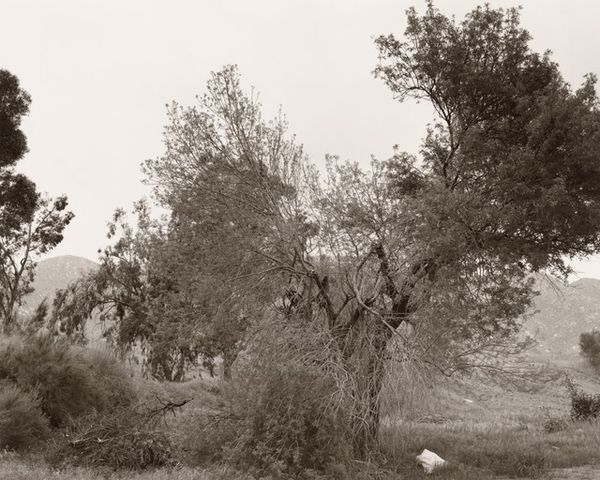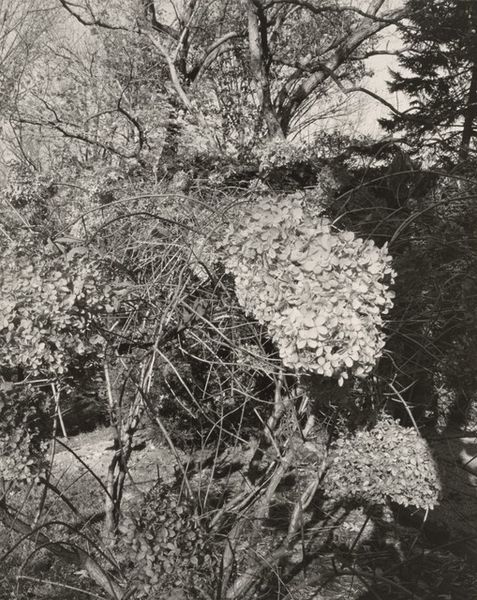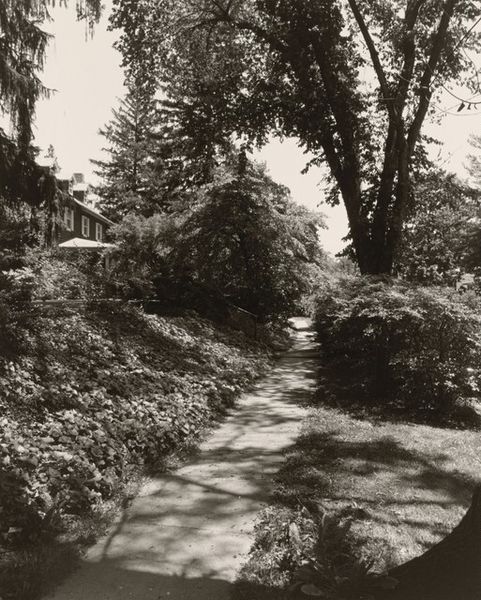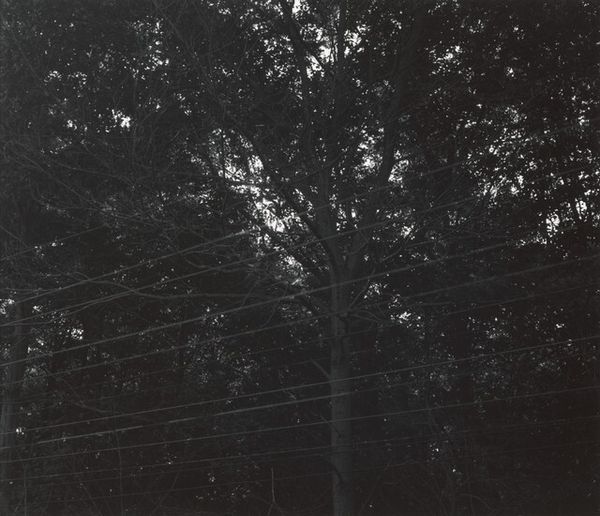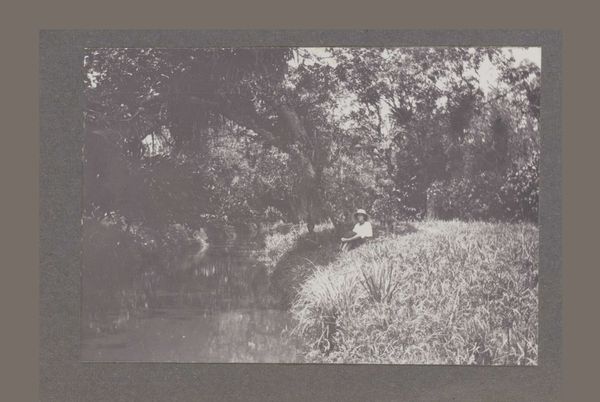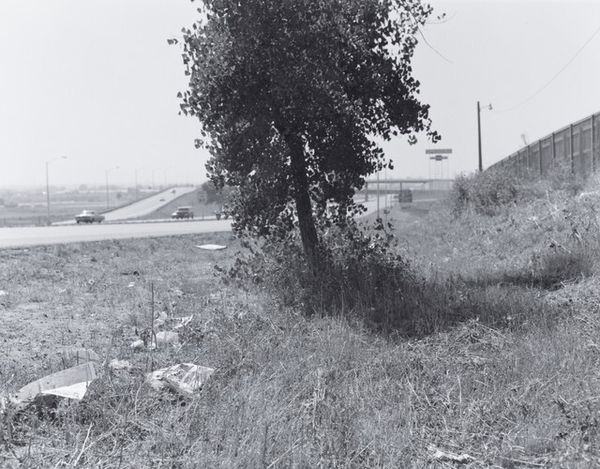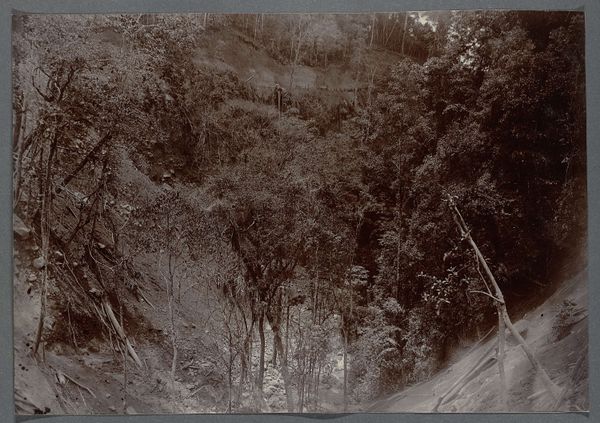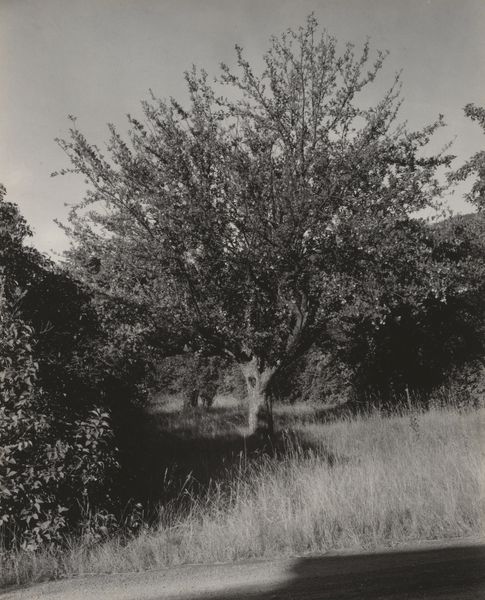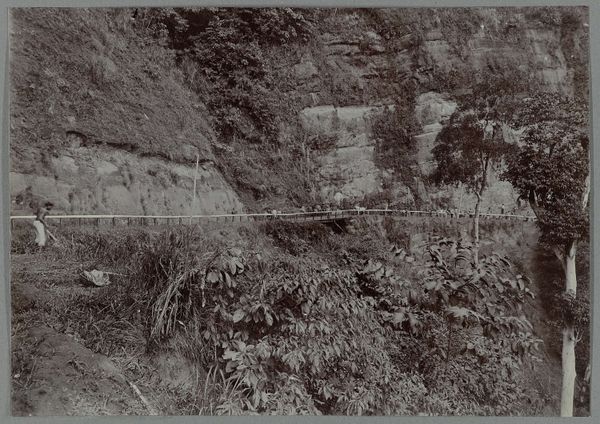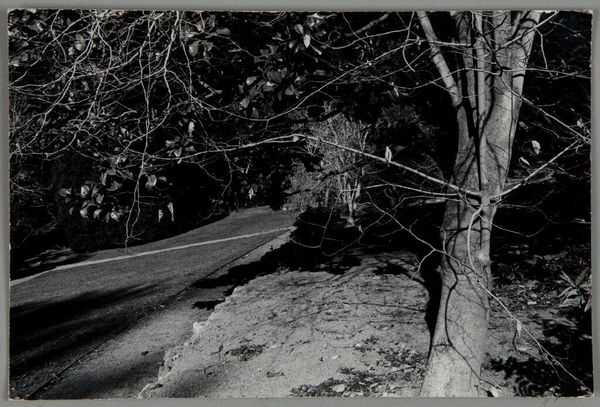
photography
#
black and white photography
#
landscape
#
street-photography
#
photography
#
outdoor scenery
#
monochrome photography
#
monochrome
#
monochrome
Dimensions: image: 34 × 25.9 cm (13 3/8 × 10 3/16 in.) sheet: 42.5 × 35.1 cm (16 3/4 × 13 13/16 in.)
Copyright: National Gallery of Art: CC0 1.0
Curator: Editor: Okay, so this is "Rustic Road, Pacific Palisades," a black and white photograph by Madoka Takagi, probably taken around 1995 or 1996. It’s quite overgrown; a path almost swallowed by nature. What’s your take on it? Curator: What immediately strikes me is the relationship between the natural and the artificial, how they are literally intertwined here. The power lines and the utility pole become structures for the organic overgrowth. This blurring challenges the idea of a pristine, untouched landscape, suggesting instead a constant state of negotiation between human industry and natural processes. Editor: So you’re focusing on how the image reflects on the process of building? I see that a bit… but can you say more about how it plays into the materials involved? Curator: The very materiality of photography is at play here, too. Think about the silver halide crystals, how they're exposed to light, manipulated in a darkroom – it’s an industrial process mirroring the development facilitated along the Pacific Palisades. But more specifically, the image itself seems to explore how those materials are not that disparate and might find ways to bind to each other. What’s created when power runs adjacent to untamed, unmanaged landscapes. This creates meaning, it gives texture, form, it even makes political assertions. Editor: I guess I never thought about how photography could point out how much materiality there is to discuss here! Do you think this kind of "organized chaos" on the rustic road, contrasts in some way? Curator: Certainly! It highlights the very human desire to categorize and separate the natural world from our constructed environments. But here, Takagi visually unites these oppositions, inviting us to see how infrastructure, like roads and power lines, actively shapes, and is shaped by the surrounding flora. This road is both constructed and is under a state of entropy that the plants impose on it. Editor: It makes me think about who controls these narratives of nature… I will keep that in mind going forward! Thanks for enlightening me. Curator: It's a perspective that's easy to miss, isn’t it? Considering art's role in mirroring not just images, but production processes can be incredibly revealing.
Comments
No comments
Be the first to comment and join the conversation on the ultimate creative platform.


